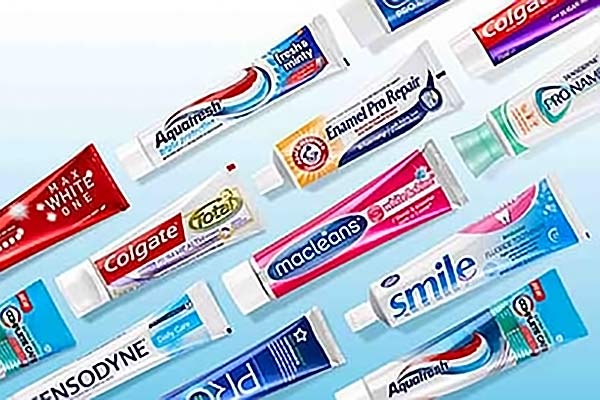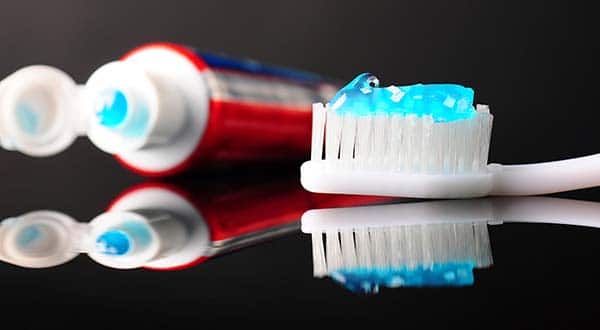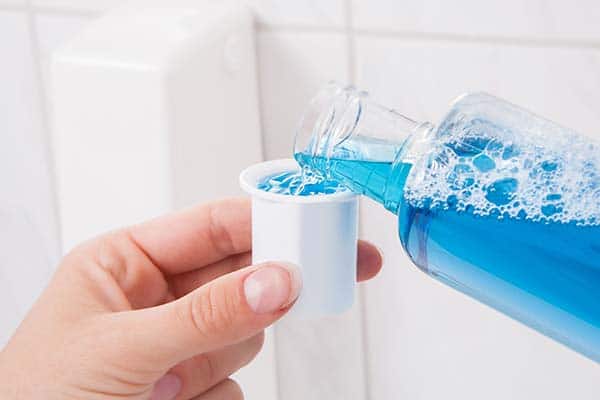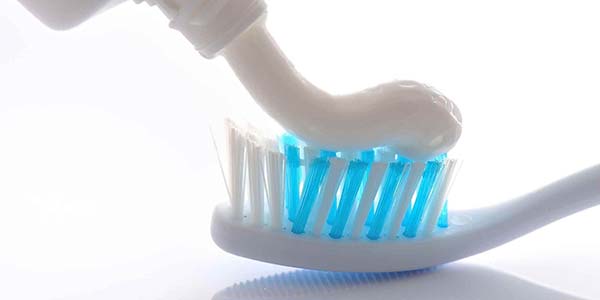What toothpaste should I use?
It is a common question we are often asked by our patients – “what toothpaste should I use?”
Visiting a supermarket or chemist’s dental section can often be an overwhelming place to stand. Whitening, bleeding gums, sensitive, extra clean, minty fresh, 3 in 1 – the choice feels often endless! So, which one?
There are a vast number of toothpaste available
Fluoride
The main thing we as dental professionals advise is that your toothpaste contains an ingredient called Fluoride. Fluoride is a naturally occurring mineral found in water. The mineral deposited into teeth helps strengthen the enamel, the outer layer of your teeth, in a process called mineralisation. The teeth can demineralise when in contact with sugar and acids from our foods and drinks. Acids are also formed as a waste product from bacteria within the plaque. This sugar and acid, in basic terms, wear away this outer layer of teeth exposing the more soft layer of the tooth which then begins to decay. When decayed, a filling is needed to take away the decayed part of the tooth to protect the nerves of the tooth becoming damaged and preventing problems such as sensitivity and pain.
Toothpaste often contains varying amounts of fluoride. Some natural toothpaste contains no fluoride at all. When advising toothpaste, we aim to stick to the guidelines given by the department of health.
The amount of Fluoride in a paste is in the ingredients section of the toothpaste with the unit as ppm (parts per million).
- Children under 3 years old should brush twice daily with a smear of toothpaste on their brush containing no less than 1000ppm of fluoride.
- Children between 3 and 6 years old should brush at least twice daily with a pea-sized amount of toothpaste containing more than 1000ppm.
- Adults should brush at least twice daily with a toothpaste containing 1350-1500ppm of fluoride.
Your dentist can prescribe higher levels of fluoride toothpaste for those who are at high risk of dental decay to aid the mineralisation process. This can also be given via a high fluoride mouthwash too.
SLS
Another ingredient that some people may need to mindful of is called Sodium Lauryl Sulphate also known as SLS.
This ingredient can be an irritant to those with a dry mouth or sensitive conditions in the mouth such as lichen planus.
SLS is an ingredient which encourages the foaming motion in all products including soaps and shampoos. It draws from the moisture that surrounds it, and so those who suffer from a dry mouth or a sensitive mouth should aim to avoid this ingredient. The Sensodyne range of toothpaste is a popular paste that does not contain SLS.
Whitening
Whitening toothpaste contains mild abrasives that help to polish the teeth to prevent the additional build-up of stains such as tea, coffee and red wine. However, they do not have much impact on older discolouration.
If you are not satisfied with the use of a whitening paste after a month, ask your dentist about other whitening solutions.
Sensitive
If the need for a filling or other treatments has been ruled out as a cause of your sensitivity, then a sensitive toothpaste may aid to help this problem.
Desensitising toothpaste works by blocking up the small tunnels or tubules within the teeth that lead to the nerves of your tooth. These pastes cannot cure your sensitivity but used daily can help reduce the pain that you feel with many people reporting significant improvements with regular use.
Always check with your dentist that there are no underlying causes to your sensitivity that the pastes could be masking.
Mouthwash
You should use mouthwash at a separate time to brushing as it can wash away the ingredients of your paste that you are trying to keep in the mouth.
If you wish to use a mouthwash, use it at least 30 mins after you have brushed or at a completely separate time to brushing such as in the middle of the day or after meals to maximise the use of your toothpaste.
Mouthwash is not seen as an essential part of your dental care routine by dental professionals unless recommended by your dentist to aid a condition you are experiencing such as ulcerations or to intake fluoride. The use of a mouthwash is otherwise down to personal preference.
In summary
Overall, toothpaste often comes down to preference and what you are wanting from your paste. Whether it be to reduce staining or to help with sensitivity, it is always advised to use a paste with fluoride as an ingredient.
But more important than your toothpaste choice is your tooth brushing technique. Regardless of your choice of toothpaste, if your brushing technique is not right, it won’t matter what the ingredients of your toothpaste are. Tooth brushing should be effectively removing plaque bacteria away from your mouth on a regular basis. Toothpaste should be seen as an add-on to a good brushing technique.
Brushing should be done morning and evening, alongside interdental cleaning with the use of fluoride toothpaste.
Your dentist or hygienist will be able to advise you on brushing technique and the best interdental cleaning aids for you as an individual to be using.
If you require an appointment with a member of the North Street team, give us a call on 01384 254 067 and we will be happy to help.






